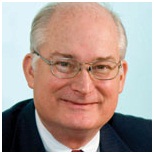Big Data—Conceptual Modeling to the Rescue |
Slides |
David W. Embley
Department of Computer Science, Brigham Young University, USA

ABSTRACT
Big data is characterized by volume (applications exceeding petabytes), variety (widely varying heterogeneous information sources and hugely diverse application needs), velocity (phenomenal rate of data acquisition), and veracity (trustworthiness and uncertainty, beyond human checkability limits). We should expect conceptual modeling to provide some answers since its historical perspective has always been about structuring information—making its volume searchable, harnessing its variety uniformly, mitigating its velocity with automation, and checking its veracity with application constraints. As an example, we show the role of conceptual modeling in superimposing a web of knowledge over a rapidly growing heterogeneous collection of historical documents whose storage requirements are likely to eventually exceed many exabytes. In particular we show how conceptual modeling can “come to the rescue” by conceptual-model-based extraction for handling volume and velocity with automation, by inter-conceptual-model transformations for mitigating variety, and by conceptualized constraint checking for increasing veracity. By extension, we provide perspectives for how conceptual-modeling can apply generally in big-data applications: the semantic web, semantic indexing, hybrid query interpretation, advanced query form generation, cross-language search and query, and ontology construction and alignment.
BIO
Professor David W. Embley received a B.A. in Mathematics (1970) and an M.S. in Computer Science (1972), both from the University of Utah. In 1976 he earned his Ph.D. in Computer Science from the University of Illinois. From 1976 to 1982 he was a faculty member in the Department of Computer Science at the University of Nebraska, where he was tenured in 1982. Since then he has been a faculty member in the Department of Computer Science at Brigham Young University.
His research interests include database systems and theory, information extraction from semistructured and unstructured documents, heterogeneous data integration, revitalization of data in historical documents, model-driven software development, and the semantic web.
He is the author of Object Database Development: Concepts and Principles, Addison-Wesley, Reading, Massachusetts, 1998; a coauthor of Object-oriented Systems Analysis: A Model-driven Approach, Prentice-Hall, Inc., Englewood Cliffs, New Jersey, 1992; and coeditor of The Handbook of Conceptual Modeling: Theory, Practice, and Research Challenges, Springer, Heidelberg, Germany, 2011.
He is a member of the steering committee for the International Conferences on Conceptual Modeling (the ER Conferences), and has served as chair for the committee.
|
What’s up in Business Intelligence? A contextual and knowledge-based perspective |
Slides |
Marie-Aude Aufaure
Ecole Centrale Paris, MAS Laboratory, Chatenay-Malabry, France

ABSTRACT
The explosive growth in the amount of data poses challenges in analyzing large data sets and retrieving relevant information in real-time. This issue has dramatically increased the need for tools that effectively provide users with means of identifying and understanding relevant information. Business Intelligence (BI) promises the capability of collecting and analyzing internal and external data to generate knowledge and value, providing decision support at the strategic, tactical, and operational levels. Business Intelligence is now impacted by the Big Data phenomena and the evolution of society and users, and needs to take into account high-level semantics, reasoning about unstructured and structured data, and to provide a simplified access and better understanding of data. This talk will depict five years research of an academic chair in Business Intelligence from the data level to the user level, mainly focusing on the conceptual and knowledge level. We will show how semantic technologies, user modeling and real-time computation are useful in the context of modern Business Intelligence.
BIO
Marie-Aude Aufaure who obtained a PhD in computer science from the University of Paris 6, is full professor at Ecole Centrale Paris (MAS Laboratory) and head of the Academic Chair in Business Intelligence. She is also scientific partner at INRIA in the Axis project. Her research interests deals with the analysis, retrieval and querying of unstructured data, and the combination of structured and unstructured data. The scientific topics developed in her team are related to semantic technologies, graphs, conceptual classification with user-centric point of view and are applied to semantic information retrieval, question and answering over data warehouses, social networks and recommender systems (special focus on user modeling and personalization). She is reviewer for many journals and conferences and has deeply published in the fields of semantic technologies, data mining and databases. She is independent expert for the European Commission (DG CONNECT) and takes part of many European and National projects. She is also local coordinator for Ecole Centrale Paris of the Erasmus Mundus Master Information Technologies for Business Intelligence.
|
Big Data and Enterprise Analytics |
Surajit Chaudhuri
Microsoft Research

ABSTRACT
In this talk, I will describe the key secular trends that characterize the field of Big Data with respect to enterprise analytics. I will describe some of the open challenges for enterprise analytics in the context of Big Data. Although some of these problems are not new, their importance is amplified by Big Data. As an example, we will discuss the task of data exploration and leveraging unstructured data for enterprise analytics.
BIO
Surajit Chaudhuri is a Distinguished Scientist at Microsoft Research and the Managing Director of XCG, a MSR lab that focuses on big bet projects in data platform & analytics, cloud systems, security & crypto, and hardware-software co-design. . He also serves on the Senior Leadership Team of the President of Microsoft’s Server and Tools division. His current areas of interest are enterprise data analytics, self-manageability and cloud database services. Working with his colleagues in Microsoft Research, he helped incorporate the Index Tuning Wizard (and subsequently Database Engine Tuning Advisor) and data cleaning technology into Microsoft SQL Server. Recently, he started a project on “Bing-Enabled Data Services” with the goal of leveraging Bing’s unique Data assets for Microsoft’s enterprise products and services. Surajit is an ACM Fellow, a recipient of the ACM SIGMOD Edgar F. Codd Innovations Award, ACM SIGMOD Contributions Award, a VLDB 10 year Best Paper Award, and an IEEE Data Engineering Influential Paper Award. Surajit received his Ph.D. from Stanford University in 1992.
|
Software: the 21st Century’s Strategic Resource |
Dr. Paul D. Nielsen
Director and CEO, Software Engineering Institute, Carnegie Mellon University, U.S.A.

BIO
Dr. Paul D. Nielsen is Director and Chief Executive Officer of the Software Engineering Institute (SEI), Carnegie Mellon University, U.S.A. The SEI is a global leader in advancing software and cybersecurity to solve the nation’s toughest problems through focused research, development, and transition to the broad software engineering community. The SEI is a key innovator in areas central to U.S. Department of Defense and civilian government operation in the cyberspace domain, including software architecture, software product lines, interoperability, the integration of software-intensive systems, network and system resilience, and the increasing overlap of software and systems engineering. The SEI also provides direct support to more than 50 U.S. government entities in their efforts to efficiently and effectively acquire and sustain new software and systems.
Since joining the SEI in August 2004, Nielsen has overseen the development and expansion of CERT, which is responsible for the SEI’s network/cybersecurity efforts, and the growth of the SEI to an organization with more than 600 employees and operating revenues of $130 million annually. In addition, he has overseen an increase in research activities related to software architecture, complex systems, and cybersecurity to address both present and future challenges. In all areas, he has expanded interactions with key stakeholders, customers, and the global software engineering community. In 2012, Nielsen oversaw the successful spinout of the CMMI product suite and its partner network to the CMMI Institute, a subsidiary of Carnegie Innovations, Carnegie Mellon University’s technology commercialization enterprise.
Prior to joining the SEI in 2004, Nielsen served in the U.S. Air Force, retiring as a Major General and Commander of Air Force Research after 32 years of distinguished service. Nielsen is a member of the U.S. National Academy of Engineering (NAE) and a fellow of both the American Institute of Aeronautics and Astronautics (AIAA) and the Institute for Electrical and Electronics Engineers (IEEE).
Nielsen earned a BS in Physics from the U.S. Air Force Academy, an MBA from the University of New Mexico, and an MS and PhD in Applied Science from the University of California, Davis.
|
|
|
|